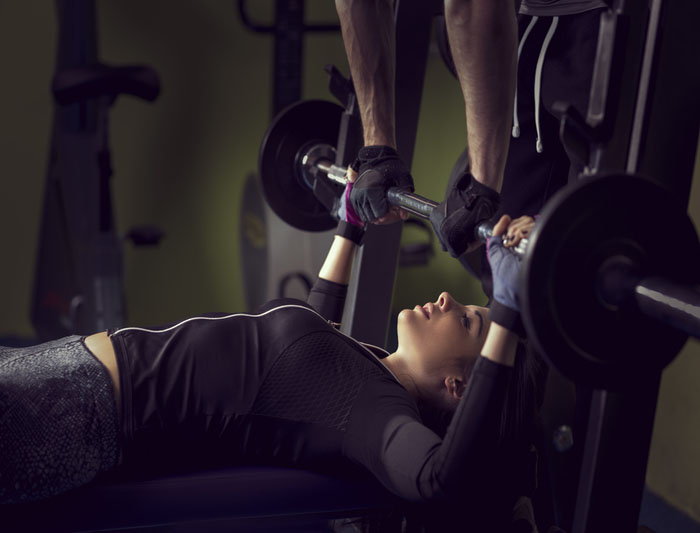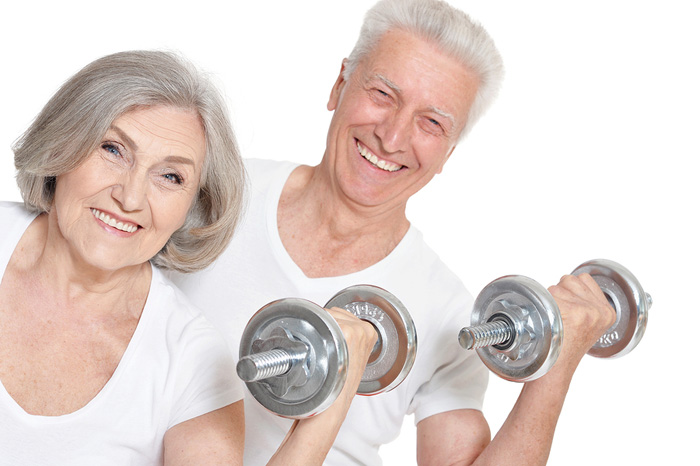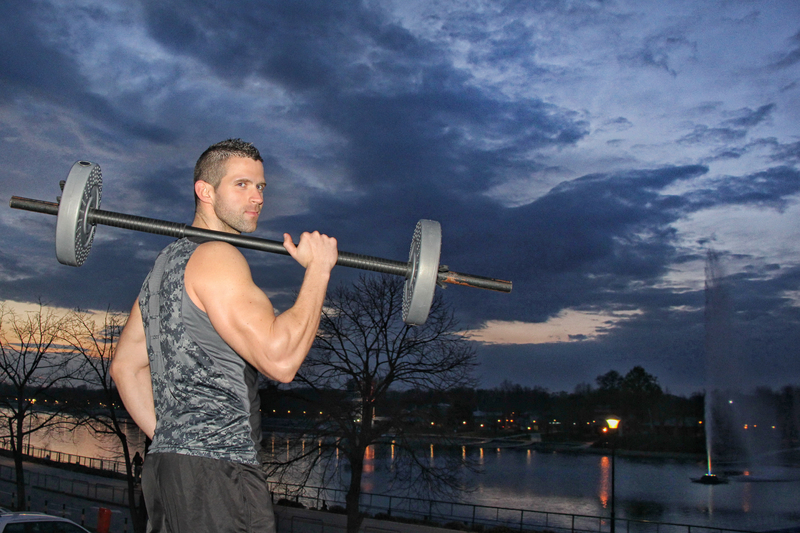Weight Training For Beginners
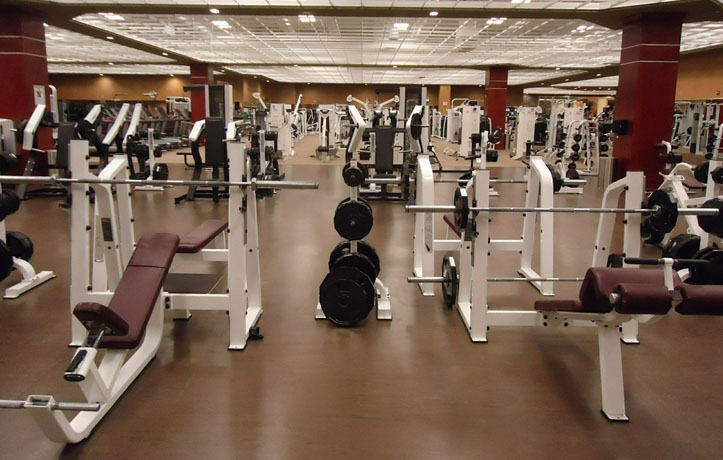
Weight Training for Beginners Can Be Intimidating
Weight training for beginners can be a bit unnerving, especially if you are walking into a room filled with equipment you have never seen or used. This article is meant to help you step into that world with more confidence.
Sorting Through All That Equipment
Muscle groups can be worked on three forms of equipment with both advantages and disadvantages.
I will use weight training movements called 'flies' as an example. Flies are intended to work the chest (pectoral) muscles.
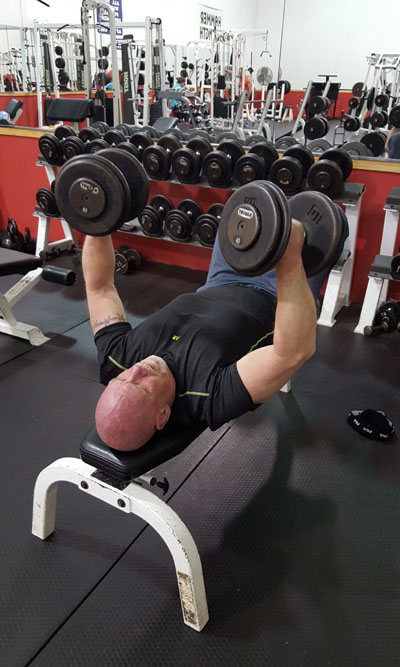 Flies with dumbbells
Flies with dumbbells
Weight Training With Dumbbells and Other Free Weights
A "dumbbell" is a free weight with a short bar between two weighted ends, as opposed to a "barbell" that has a longer bar with weights on the ends. "Free weights" are any piece of equipment that isn't a machine or a cable. A kettlebell is a single, iron, bell-shaped weight with a handle.
There's a degree of risk when you’re handling free weights – like dropping one on
your foot or someone else’s. One of the great benefits of using them is that they help build strength to perform everyday movements or movements required in your sport -- known as 'functional movement.'
First of all, never lift a free weight that you can't handle! I also recommend wearing gloves that give both padding and grip.
Free weights are great for neuro-muscular connections because they require control and balance. Free weights allow for compound movements, meaning that the movements require other muscles to stabilize the exercise. They also makes the demand equally on each side -- no compensating movements allowed!
When doing flies, you can work the muscles at different angles by raising or lowering the bench.
Weight Training Machines
Although weight machines don't mimic functional movement, they are great for isolating a particular muscle -- for example, if you are wanting to increase the size or strength of a specific muscle.
Weight machines are fairly safe and give you the ability to release the weight in an emergency without harming yourself or others.
Another benefit is that many weight machines are designed to keep your body in the correct position during the movements, so there is less chance of injury or using other muscles to move the weight. This can be helpful if you are working around an injury.
Be sure you are properly positioned on the machine. If you don't know how to adjust the machine for your body, ask a trainer at the gym to show you. Most gyms should have someone on staff who knows how to properly use the equipment. If you are not properly aligned, you may not get the greatest benefit or could injure yourself.
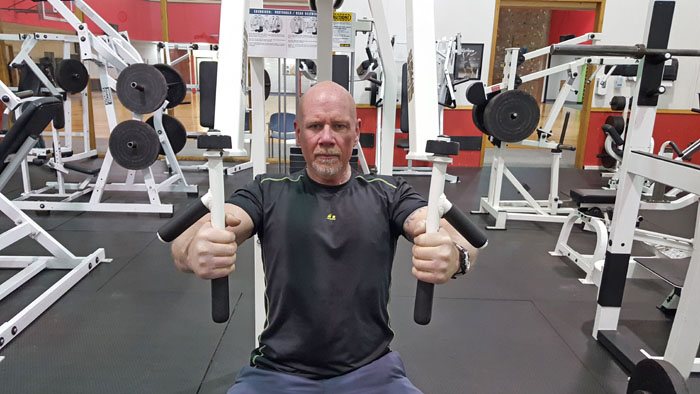 Flies on a weight machine
Flies on a weight machineTry to use newer equipment, if possible. Unfortunately, there are still some poorly designed machines out there.
As an example, I suggest you avoid any leg press machine that places unnecessary compression on the spine. If the machine places the load on your shoulders as you push with your feet, seek an alternative. A better leg press will allow you to angle your body so that the force is mostly between your hips and feet.
Unless you are a power lifter wearing a weight training belt, do not allow your spine to rest between two powerful, opposing forces.
Weight Training With Cables
I love cables because they require similar directional control that you must incorporate when using free weights. They offer the added benefit of safety and range of motion that certain machines are designed to provide.
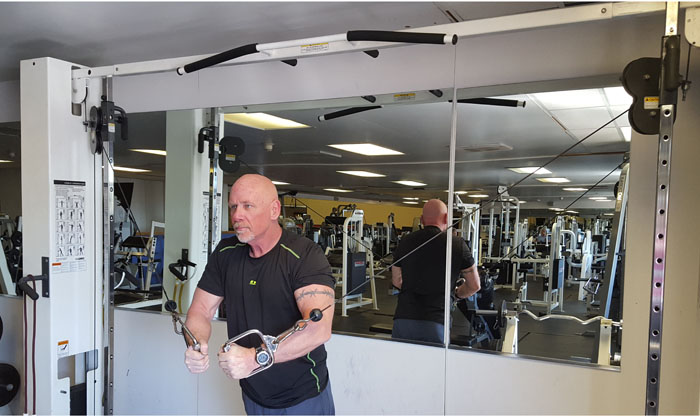 Flies with cables
Flies with cablesCables are safer than free weights because, in an emergency, you can let go without the risk of a weight falling on you or someone nearby.
A cable allows you to work the muscle at varying angles without having to stop to change the bench position or the risk of straining the muscle because you have lost control of the angle.
Cabless offer the great benefit of full-range motion, which works the entire muscle, or limited movement for functional training.
Weight Training Terminology For Beginners
I would be remiss to not include a bit of jargon when writing an article about weight training for beginners. You will not only hear it, you will find yourself using it in no time at all.
A rep (short for repetition) is one execution of a movement.
A set is a completed repetition phase. For example, you may perform 10 to 12 reps in a set.
Muscle failure is the point when an additional rep is no longer possible using strict form.
Overtraining is a point at which the muscle stops making strength gains or building mass. It can also cause a loss of gains already made, negatively affect athletic performance, and increase the risk of injury.
A spotter is someone who is there to assist you with a movement.
Recovery is the period of time between workouts that allows the muscles to rest and grow.
Etiquette
Don't interrupt or talk to someone who is in the middle of their set.
Return free weights to the stacks after use.
If you are waiting, or if someone else is waiting, to use the same piece of equipment, you can offer or request that you alternate sets with that person. This is particularly useful if the weight room is crowded and equipment is heavily occupied.
Don't stand to close to someone who is lifting. Give them space.
If you are resting between sets, don't rest for more than 60 seconds, so you don't create a 'traffic jam' when the gym is busy.
Step out if you need to make or take a phone call.
If someone is wearing headphones, wave or smile, but don't talk to them.
Wipe down each piece of equipment wherever your skin had contact -- such as the grips.
Final Words of Advice
If you're not sure that you want to commit to a gym membership, take advantage of introductory offers or free day passes before you take the leap.
I want you to succeed, and you will if you follow this final advice.
- Be patient.
- Lay solid groundwork by using good technique.
- Remember that all fitness goals require consistency over time.
- Whether using free weights, machines or pulleys, you might consider buying a pair of gloves to prevent callouses, and allow for a better grip.
More Topics That May Interest You
Some of the advertisers on my website are affiliate partners, which means that I may receive a small commission from any sale, at no extra cost to you.
For example, the Amazon affiliate advertising program is designed to provide a means for sites to earn fees by advertising and linking to amazon.com.
Your tips and purchases help to support this free-information website.
Thank you.
The content of this website is for informational purposes only and not intended to be taken as a replacement for professional medical advice, care, diagnosis or treatment by a doctor, dietitian, physical therapist, nutritionist or fitness instructor.
DO NOT BEGIN ANY EXERCISE PROGRAM WITHOUT CHECKING WITH YOUR DOCTOR FOR UNDERLYING CONDITIONS THAT MAY PREVENT YOU FROM DOING SO.
